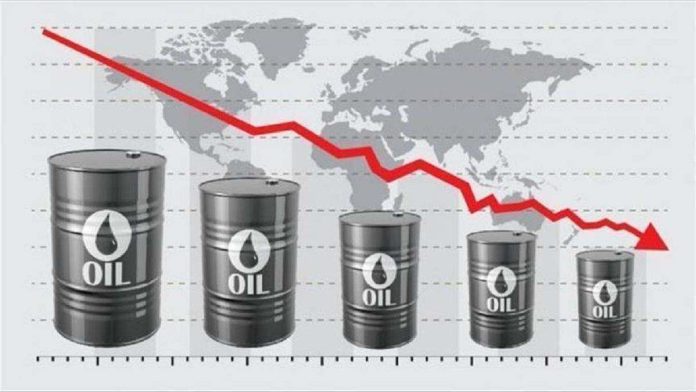Crude oil prices continued their downward trend in the global commodity market following the announcement of reciprocal tariffs by U.S. President Donald Trump on April 2. Brent crude, the international benchmark, fell by approximately 2%, trading at $72.17 per barrel, down from $73.64 at the previous session’s close.
Meanwhile, the U.S. benchmark, West Texas Intermediate (WTI), dropped by 2.1% to settle at $69.01 per barrel from its prior session close of $70.48. President Trump’s executive order, imposing baseline tariffs of 10% on most nations—excluding Canada and Mexico—has unsettled markets. Higher tariff rates will be applied to countries identified by Trump as ‘worst trade offenders.’ The move, a fulfillment of a long-standing pledge, has sparked concerns over potential retaliatory actions.
U.S. Treasury Secretary Scott Bessent warned against countermeasures, stating that any retaliatory tariffs could prompt even steeper U.S. rates. European Commission President Ursula von der Leyen criticized Trump’s policy as a ‘major blow’ to the global economy, predicting widespread economic repercussions. Market analysts expect retaliatory tariffs from affected nations, heightening fears of a prolonged trade war that could slow economic growth, reduce oil demand, and push prices even lower.
Additionally, the Energy Information Administration (EIA) reported that U.S. commercial crude oil inventories rose by 1.4% in the week ending March 28, increasing by 6.2 million barrels to 439.8 million barrels—slightly below market expectations of a 6.37 million-barrel rise. Strategic petroleum reserves, which are separate from commercial crude stocks, grew by 300,000 barrels to 396.4 million barrels.
During the same period, gasoline inventories dropped by 1.6 million barrels to 237.6 million barrels, while U.S. crude oil production increased by 6,000 barrels per day (bpd) to approximately 13.58 million bpd as of March 21.
Crude oil imports into the U.S. rose by 271,000 bpd to 6.4 million bpd, while exports declined by 728,000 bpd to 3.8 million bpd.
In its Short-Term Energy Outlook (STEO) released on March 11, the EIA forecasted that U.S. crude oil production would reach an average of 13.61 million bpd in 2025.














